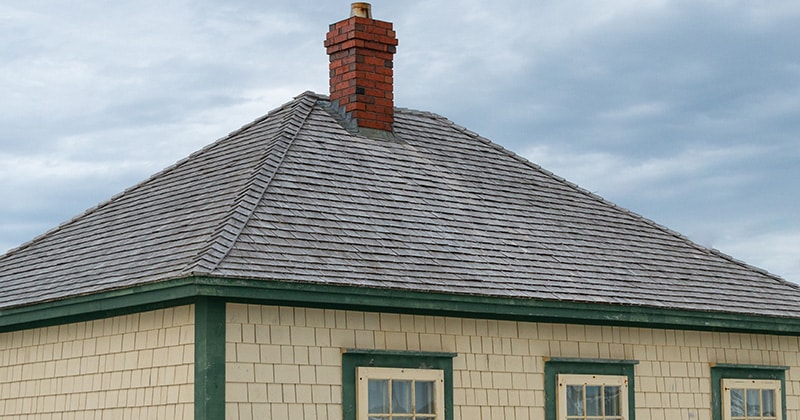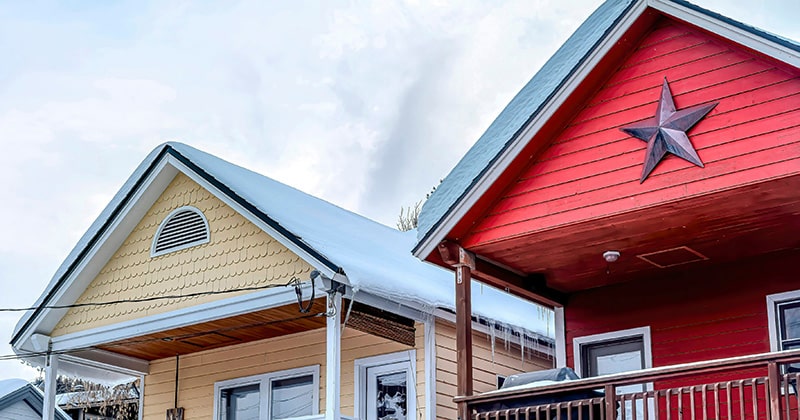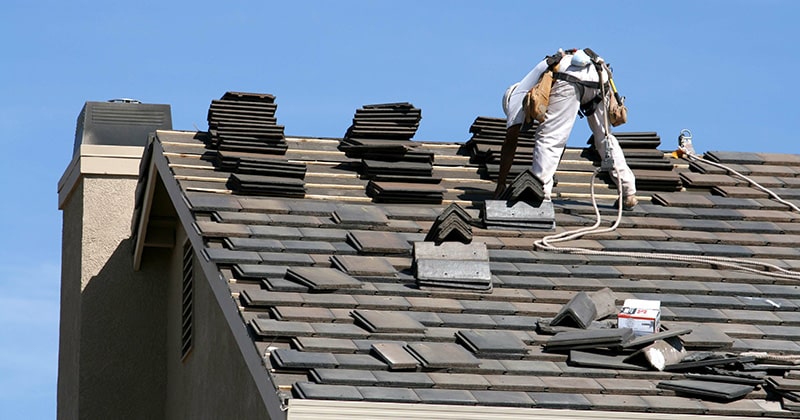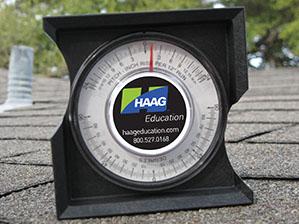Picture this: You’re a roofer standing in front of a home, trying to decide the best roof to suggest.
The family living under it trusts your expert advice. They want a roof that looks good, lasts a long time, and fits their budget.
It’s the hip vs. gable roof debate. And it’s a big decision with far-reaching implications.
Choosing between a hip and gable roof is more than just picking a style. It’s about finding the right fit for each customer’s home.
In this article, we’ll explore what makes hip and gable roofs different, from their designs to their benefits.
We’ll compare their features side by side and give you tips on making the best choice for any property. Whether it’s battling the weather or matching aesthetics, we’ve got you covered.
Homebuilder confidence reached its highest point in six months in February 2024. This positive sentiment means it’s a great time to focus on giving the best service to your customers by recommending the ideal roof for their needs and location.
But first, let’s get to know the roof types in detail.
FROM ONE OF OUR PARTNERS: 9 Roofing Trends to Watch

What Is a Hip Roof?
A hip roof is a type of roof where all sides slope downward to meet the walls. There are no flat ends.
The edges where these slopes meet are called hips, which come together at the top to form a peak.
Imagine a stretched-out pyramid. That’s what a hip roof looks like.
Characteristics of Hip Roofs
Hip roofs are unique because they slope from every side. This makes them look smooth and even.
They don’t have any sharp edges. This is great for places with lots of wind or rain because it reduces the chance of damage.
In fact, people living in places with frequent hurricanes or strong winds, like Florida, can get a discount on their home insurance for having a hip roof.
Here are some specific traits of hip roofs:
- Slopes on all sides: This design helps water and snow slide off easily, which keeps homes safe and dry.
- Strong and stable: The way hip roofs are constructed makes them extra sturdy. Added strength is especially helpful in areas with strong winds or big storms.
- Looks neat: Hip roofs have a tidy, finished look that can make any house look nice.
- More complex to build: Because of their design, hip roofs can be a bit harder to build than some other types. This might mean they cost a bit more to build.
Hip roofs are a great choice if your customer is looking for something that looks good, lasts long, and can withstand tough weather.
RELATED ARTICLE: Severe Weather Roofing: Best Practices for Roofing Companies
What Is a Gable Roof?
A gable roof is a type of roof that forms a triangle shape. Only two sides slope up and meet at the top in a line called a ridge.
It’s a very common and traditional roof style you see on many houses. Gable roofs are easy to spot because of their simple and classic look.
Characteristics of Gable Roofs
Gable roofs can be designed in different ways. The pitch can be steep or gentle. The ridge can run along the length of the house or go from the front to the back. It’s easy to accommodate different home layouts and future additions.
This makes gable roofs very flexible in terms of design.
Here are some specific traits of gable roofs:
- Triangle shape: The two sloping sides create a triangle at each end of the house. These triangles are called gable ends.
- Ridgeline: The ridge is the highest point where the two sides meet. It runs along the top of the roof.
- Good for rain and snow: The sloping sides help water and snow slide off easily. This means less chance of leaks or damage.
- Easy to build: Gable roofs are simpler and often less expensive to build than more complex roof styles.
- Ventilation: The design of gable roofs allows for good ventilation in the attic. This can help keep properties cooler in the summer.
Gable roofs are a great choice if your customer is looking for something simple, affordable, and timeless. They work well in many different climates and can fit a variety of house styles.

Hip vs. Gable Roof: Which Option Should Roofers Recommend?
Choosing whether to recommend a hip and a gable roof depends on many things, such as weather, style, and cost. Both have positive and negative points.
FROM ONE OF OUR PARTNERS: How Much Does a Metal Roof Cost
This table gives you a quick overview of the differences between the two.
| Feature | Hip Roof | Gable Roof |
| Shape | Slopes on all sides | Two sloping sides |
| Strength | Strong, good for wind | Good, but less so in wind |
| Weather | Great for rain and snow | Great for rain and snow |
| Cost | More expensive | Less expensive |
| Complexity | More complex | Simpler |
| Look | Smooth and even | Classic, triangular ends |
| Ventilation | Adequate | Very good |
Now, let’s take a closer look.
Hip Roof Advantages and Considerations
Hip roofs are strong and can handle heavy wind and rain. This is a big bonus in areas that experience frequent adverse weather conditions.
They also look the same from all sides. A hipped roof can appear a little more uniform.
However, they can be a bit more complex and expensive to install because of their shape. They need more materials and time to build correctly. And, when it comes time to replace the roof covering, it’s a higher expense for your customer.
Gable Roof Advantages and Considerations
Gable roofs are popular because they are easier and often cheaper to build. Lower cost is a plus for both you and your customer. But the aesthetics might appear a little choppy to some customers.
Gable roofs let water and snow slide off easily, which helps prevent leaks. This feature is good for snowier climates where a steeper pitch can help prevent heavy snow build-up.
They also allow for more airflow in the attic, which can help keep homes cooler in warmer climates. However, they might not be as strong as hip roofs in places with a lot of wind.

The Impact on Building Style
When deciding on a roof to recommend, imagine how it will make the whole building look. The roof isn’t just there to keep the rain out. It also contributes to the building’s style.
A hip roof creates a modern and sleek look. It’s all smooth and even. This roof type can make a house look sharp and elegant from every angle.
Hip roofs are especially well-suited to the following architectural styles:
- Contemporary: Clean lines and minimalist design pair well with the sleekness of hip roofs.
- Ranch-style: The long, low pitch of hip roofs complements the single-story, expansive layout of ranch homes.
- French Provincial: The elegance and symmetry of French Provincial architecture are well-matched with the refined appearance of hip roofs.
With its classic triangle shape, a gable roof fits well with country or Hamptons-style homes.
You can add special windows or use the space at the top for an attic. This roof style gives a more traditional feel to a building.
Gable roofs fit most aesthetics but are particularly suitable for these architectural styles:
- Colonial: The balanced and symmetrical design of Colonial homes is perfectly complemented by the simple, classic lines of gable roofs.
- Victorian: Gable roofs can add to the ornate and intricate designs typical of Victorian architecture, especially with added features like gables and dormers.
- Cape Cod: This quintessentially American style, known for its simple, cozy aesthetic, is often topped with a steeply pitched gable roof.
- Tudor: The steep gables of Tudor-style homes are not only functional but also contribute to the medieval, fairy-tale look characteristic of this architecture.
Practical Considerations
It’s not all about looks. You also need to consider the weather and how much work your customers want to put into keeping the roof in good shape.
Gable roofs are great because the pitch makes things like leaves, snow, and rain slide right off. This means less work is needed to keep it maintained, and there is less chance of damage.
They’re a smart choice if your clients want something easy to look after that can last a long time.
Hip roofs are strong and good at dealing with wind and rain. But, because of their shape, they might need a bit more work to keep clean.
They’re still a good choice, especially in places with many weather changes.
FROM ONE OF OUR PARTNERS: 9 Tips That Will Help You Prepare for a Roof Replacement
Choosing the Right Roof
So, which roof should roofers recommend—hip vs. gable roofs? Ultimately, the answer depends on your customer.
Think about what’s most important for the building and the people living there. Both hip and gable roofs have their benefits. The best choice depends on what your clients need and like the most.
Take Action Now with These 3 Tips
Here are three quick ways to make sure you’re recommending the right roofs to your clients:
1. Check Local Climate.
Look at the weather patterns in your area. Is it windy? Does it snow a lot? Pick a roof that can handle the weather.
2. Understand Property Style.
Look at the building’s design. Is it modern or more traditional? Choose a roof that matches the style of the property.
3. Consider Customer Budget.
Think about how much money your customer can spend. Remember, some roofs might cost more initially, but they can save money in the long run by being more durable. They may even score a discount on their insurance.



